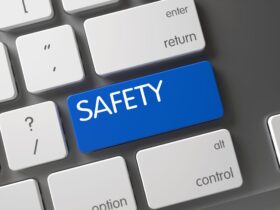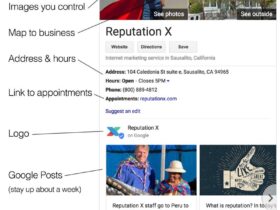Understanding brand risks is essential for businesses in a fast-paced marketplace, particularly marketing agencies and SMBs. These risks can severely impact a company’s reputation and success, from internal issues like ethical missteps to external threats like data breaches. This article delves into different brand risks and their potential impact. It offers practical strategies for identifying, assessing, and managing these risks, including critical tips on reputation management and crisis response.
What Are Brand Risks?
Brand risks can damage a company’s reputation from internal issues like ethical lapses or external events such as data breaches or product recalls. External factors, such as negative public opinion and regulatory actions, can also be significant sources of brand risks. Understanding these risks is key to maintaining stakeholder trust and protecting a brand’s image in a competitive market. By proactively planning and using risk management strategies, businesses can identify potential threats and prevent reputational damage, ensuring the brand’s integrity stays strong.
What Are the Different Types of Brand Risks?
Different brand risks can significantly affect a company’s reputation and business performance, from reputational risks tied to ethical lapses and negative reviews to operational risks like supply chain issues and cybersecurity breaches. These risks exceed financial losses, impacting customer perception, satisfaction, and loyalty. Reputational risks stem from negative public sentiment, requiring strong reputation management and transparent communication to maintain trust. Operational risks affect efficiency and customer experience, while external risks like economic shifts demand effective crisis management. Managing these risks through digital protection and brand monitoring is key to preserving a company’s image and ensuring long-term success.
What Are the Consequences of Brand Risks?
Brand risks, such as negative public perception and ethical missteps, can seriously affect a company’s reputation. They can lead to reputational damage that weakens customer trust, reduces brand loyalty, and harms a company’s credibility in the marketplace.
How Can Brand Risks Affect Your Reputation?
Brand risks can significantly impact your reputation, often leading to negative publicity and social media backlash that damages customer satisfaction and public perception. Identifying potential risks to recognize and assess threats that could impact your reputation is crucial. In a competitive market, understanding how to manage these risks is key. The initial crisis response sets the tone for customer reactions and can either help resolve the situation or make it worse. Open communication with stakeholders and employee transparency are crucial during a crisis, as they help rebuild trust and maintain morale. Organizations can navigate challenges while reinforcing customer and employee loyalty by actively managing the narrative and implementing a solid crisis response strategy, including real-time alerts and risk monitoring. Proactively addressing risks before they escalate emphasizes that reputation management is about prevention and recovery.
How Can Brand Risks Affect Your Business?
Brand risks can profoundly affect your business, leading to reputational damage that deters potential clients, undermines stakeholder confidence, and results in lost opportunities and decreased revenue. Beyond financial losses, these risks impact market presence, employee morale, and corporate culture. Negative publicity can erode customer trust, hurt sales, and diminish market share. It can also lead to employee dissatisfaction as uncertainty grows within the company. Given these challenges, risk management becomes essential. Developing a solid crisis management plan and proactive risk mitigation strategies allows businesses to respond swiftly and effectively, mitigate potential risks, protect their reputation, and ensure long-term stability.
What Are the Common Causes of Brand Risks?
Brand risks can stem from various sources, including internal factors like ethical lapses and external elements such as social media backlash. Corporate affairs are crucial in managing brand reputation by identifying and mitigating these threats to maintain a positive public image. Internal risks often arise from weak corporate culture, poor onboarding practices, and inadequate employee training, undermining transparency and accountability. A strong corporate culture that fosters employee engagement and ethical decision-making helps protect a brand’s integrity. On the other hand, external risks, like negative social media reactions or shifting consumer opinions, can quickly damage a company’s reputation. Proactive strategies, such as regular employee training, effective stakeholder communication, and digital risk protection, are essential in mitigating these risks and maintaining a positive public image.
How Can You Identify and Monitor Brand Risks?
Identifying and monitoring brand risks through effective business strategies requires a blend of practical risk assessment tools, including monitoring systems and digital risk protection strategies. These tools enable companies to proactively detect potential threats and take swift action to protect their reputation. By staying ahead of emerging risks, businesses can safeguard their brand and maintain customer trust.
What Tools and Strategies Can Help Identify Potential Risks?
Businesses can leverage tools like analytics to effectively identify brand risks, such as real-time alerts, data breach detection, and brand integrity assessments. Strategic risk is also a critical consideration, defined as the potential challenges a business faces when it deviates from its established business model or strategic plan. By incorporating customer feedback, social media monitoring, and reputation signal analysis, companies can gather valuable insights and address potential concerns early. Automated sentiment analysis and threat detection tools help gauge public perception and spot negative trends before they escalate. Consistent brand monitoring and strong stakeholder management safeguard a company’s reputation while fostering customer trust and loyalty.
How Can You Monitor Brand Risks Through Social Media Monitoring?
Effectively monitoring brand risks requires businesses to leverage social media monitoring tools, digital risk protection, and analytics to manage brand awareness and customer communications. In today’s fast-paced digital landscape, a comprehensive approach is crucial for safeguarding reputation and customer loyalty. Social media monitoring and real-time alerts help track brand perception and enable quick responses to potential threats. Training employees on social media engagement further strengthens the company’s ability to maintain a positive image. Additionally, regular stakeholder engagement, ongoing risk assessments, and contingency plans for crisis management are vital. These proactive measures protect the brand’s reputation, reduce risk, and foster loyalty, reinforcing the company’s position in a competitive market.
Internal and External Risks
Internal and external risks are two types of risks that can significantly impact a company’s brand reputation and overall success. Understanding these risks is crucial for developing effective risk management strategies.
The Role of Leadership in Risk Management
Leadership plays a pivotal role in risk management, setting the tone and direction for the company’s efforts to protect its brand reputation and ensure long-term success. Effective leaders understand the importance of risk management and prioritize it as a key aspect of their business strategy.
What Are the Best Practices for Managing Brand Risks in Collaboration with Marketing Agencies?
Best practices for managing brand risks involve creating a crisis management plan, providing practical employee training, and establishing a solid communication strategy that protects brand integrity and customer data. Retaining existing customers by maintaining loyalty is crucial for a company’s financial health and overall success. A well-developed crisis management plan ensures business continuity and mitigates reputational damage by focusing on risk assessment, stakeholder management, and clear communication. Employee training prepares teams to respond effectively during emergencies. Building a solid brand reputation requires aligning company values with stakeholder expectations, committing to ethical practices, and maintaining high customer satisfaction. Implementing brand monitoring tools and real-time feedback mechanisms strengthens transparency and trust. Effective communication strategies prioritize swift, consistent messaging and proactive stakeholder engagement, help brands navigate crises, and maintain positive customer relationships.
What to Do When Brand Risks Threaten Your Reputation?
When potential risks threaten your reputation, it is critical to respond swiftly and effectively, employing strategies that focus on identifying and mitigating risks, reputation recovery, and restoring customer trust.
How to Respond to Brand Risks?
Responding to brand risks requires implementing crisis strategies emphasizing customer feedback and proactive planning to limit reputational damage. Many brands face significant challenges in maintaining a positive image, especially in a rapidly changing public perception landscape. Establishing a solid framework enables organizations to address immediate threats while building long-term trust with stakeholders. Monitoring customer feedback allows brands to identify concerns and quickly adjust strategies to mitigate negative impacts. Social media engagement helps uncover valuable insights into public sentiment, while data analytics enhances risk analysis by identifying vulnerabilities. A responsive approach tackles current challenges and prepares the brand to handle future risks effectively.
How to Rebuild Your Brand Reputation Through Reputation Management?
Rebuilding your brand reputation requires a dedicated focus on reputation management, fostering customer trust, and maintaining ethical conduct. To navigate a brand crisis, assess the damage to understand its impact on loyalty and stakeholder relationships. Open and transparent communication with customers, employees, and partners is crucial for mitigating negative perceptions. Steps to take include conducting a thorough investigation to determine the root cause, developing clear messaging to address concerns, implementing corrective actions, and continuously engaging with your audience to rebuild trust. A brand can regain its position in the marketplace through these efforts and a commitment to ethical practices.















